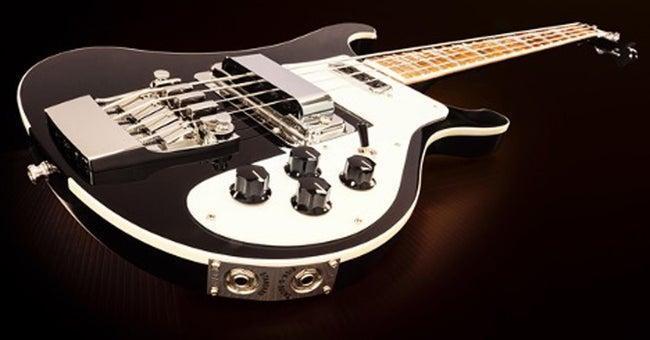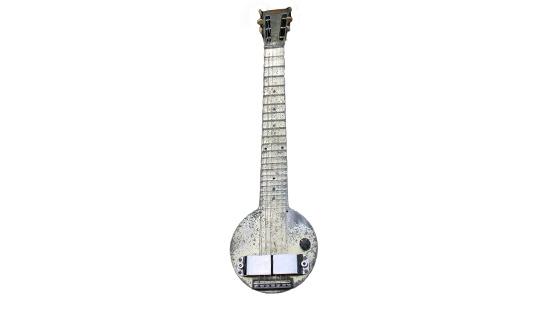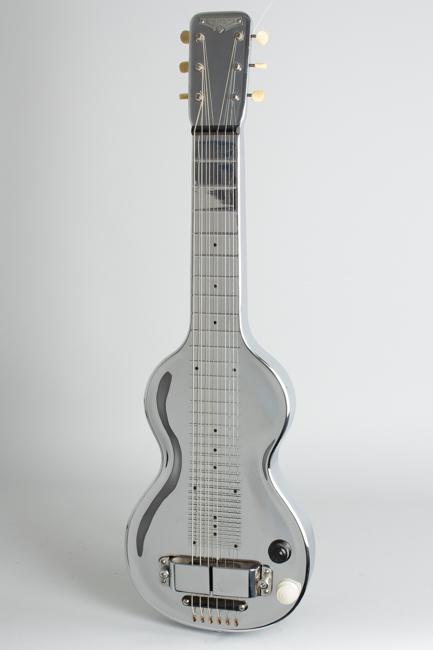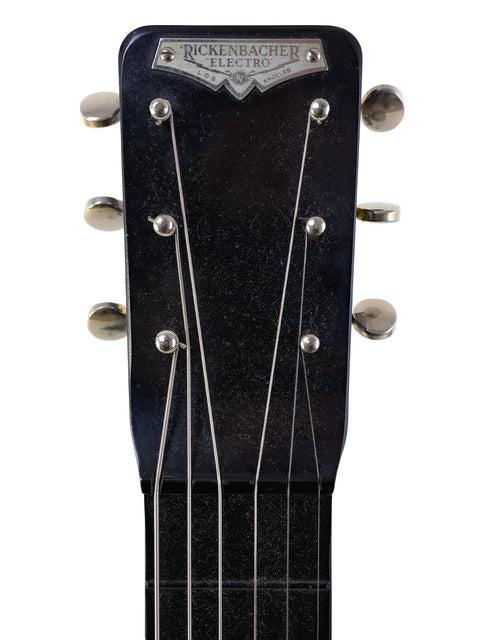Introduction to Lap Steel Guitars
As a guitarist, I’ve always been driven by a deep curiosity for unique sounds and unconventional instruments. My first encounter with a Rickenbacker lap steel guitar was nothing short of transformative. The moment I placed the slide against the trembling strings, I realized I was on the brink of discovering a new musical language. This instrument didn’t just speak—it sang, cried, and conversed in a tonal spectrum I had seldom explored. Rickenbacker’s lap steel models captivate with their rich history and distinctive voice, essential to genres from classic country to modern ambient soundscapes.
Through this guide, I invite you to join me on a journey through the world of Rickenbacker lap steel guitars. We’ll delve into their renowned design and build quality, explore the variance in sound characteristics amongst different models, and navigate the nuances between the iconic Frying Pan and more contemporary styles. Whether you’re a collector enchanted by the vintage allure or a player keen on the modern adaptations, understanding these instruments is key. Let’s dive deep into what makes Rickenbacker’s lap steel guitars uniquely captivating.
Features of Rickenbacker Lap Steel Guitars
Design and Build Quality

Did you know that the Rickenbacker Frying Pan is one of the first solid-body electric guitars ever made? This iconic innovation set the stage for Rickenbacker’s dedication to superior design and build quality, a hallmark that continues to define their lap steel guitars. When exploring the features of vintage lap steel guitars, particularly pre-war Rickenbacker models, it becomes evident how critical thoughtful craftsmanship is in achieving unparalleled sound and durability.
In my experiences analyzing these instruments, I’ve observed that Rickenbacker’s commitment to high-quality materials and expert engineering significantly contributes to their enduring reputation. For instance, the use of robust metals and carefully selected woods in the construction of their lap steels not only enhances tonal quality but also provides excellent structural stability. This meticulous attention to detail ensures that each model is not just an instrument, but a piece of art capable of producing a rich, resonant sound that speaks volumes about its heritage.
This dedication to design excellence directly influences the impressive sound characteristics discussed in the following section, seamlessly bridging the gap between aesthetic appeal and functional brilliance. Understanding the nuances of these design choices goes a long way in appreciating the unique sound that distinguishes Rickenbacker lap steels from others in the market.
Sound Characteristics

The sound characteristics of Rickenbacker lap steel guitars are truly unique, offering a rich palette of tonal possibilities that have captivated musicians worldwide. From my own experiences, I’ve found that the blend of the distinct construction and innovative pickup design sets these instruments apart from other lap steels. Rickenbacker’s signature pickups, for instance, provide a warm and resonant voice that can traverse the spectrum from smooth Hawaiian tones to piercingly bright leads. But how can a unique tuning setup transform the sound of a lap steel guitar? This question is key when exploring the versatility inherent in these instruments.
Each specific tuning, whether traditional Hawaiian or experimental, opens up new tonal landscapes, molding not just the sound but also the playing style. This flexibility is a foundational feature of Rickenbackers, allowing artists to personalize their musical expression. By optimizing tunings, I’ve been able to stretch beyond what I initially perceived as possible, letting each Rickenbacker model reveal its true sonic potential. As we dive deeper into the different models and their unique attributes, keep in mind these sound characteristics as they unveil the sheer diversity and capability of Rickenbacker lap steels.
Understanding Different Models
Frying Pan vs. Other Models

What sets the Rickenbacker Frying Pan apart from its lap steel counterparts? Having spent years immersed in the world of lap steel guitars, I’ve encountered numerous instrumental variations. My expertise lies in discerning the specific characteristics that define each model. The Frying Pan is not just a pioneering design but a revolution in electric guitar history. Unlike other lap steels I’ve experienced, it features a distinct aluminum body that lends it a unique resonance, crucial for producing the vibrant and sustained tones I find so captivating.
I remember the first time I played a Frying Pan; its sound was unlike any other lap steel guitar I’d encountered. This difference is not just a novelty—it’s an invitation to explore new musical possibilities. In my work, focusing on the nuanced playing characteristics and craftsmanship of various models has been vital for giving my readers a comprehensive lap steel guitar buying guide. The Frying Pan remains a landmark, influencing not just Rickenbackers but the entire industry trajectory. As we delve into vintage versus modern models, consider how this icon has shaped what players seek in tone and playability.
Vintage versus Modern

Understanding the unique allure of Rickenbacker lap steel guitars begins with a dive into the contrasts between vintage and modern models. As someone who has performed on both, I have seen firsthand their distinct attributes and the impact they can have on a player’s journey. This has led me to ponder a question that many enthusiasts grapple with: Are vintage lap steel guitars worth the investment compared to modern instruments? Let’s explore this further.
Nothing quite captures the nostalgic tones of yesteryear like vintage lap steel guitars, especially the famed Bakelite lap steel models crafted in the early Rickenbacker era. Their sound is iconic, characterized by a warmth and authenticity that’s hard to replicate. But it’s not just about sound; their build quality and historical significance add an irreplaceable layer of value.
On the other hand, modern Rickenbackers offer unparalleled technological advancements. These instruments provide consistency, ease of play, and often a broader tonal range, often appealing to musicians seeking versatility. While technology bridges gaps, it’s essential to consider whether the historical essence of vintage models is what you’re truly after.
In deciding between vintage and modern, weigh these considerations based on your musical goals and personal connection to the instrument, as this will greatly shape your playing experience and satisfaction.
Buying Tips for Rickenbacker Lap Steel Guitars
Where to Buy

What are the best places to find authentic Rickenbacker lap steel guitars? As both a buyer and seller in the music community, I understand the nuances of tracking down these distinctive instruments. To start, online platforms like Reverb and eBay are excellent for finding a variety of models and facilitating transparent communication with sellers. Each transaction should involve a thorough verification of authenticity. Locally, vintage guitar shops and music stores often carry Rickenbackers, allowing you to personally inspect their condition and even test them out. These trusted venues not only provide opportunities for direct interaction but also create meaningful connections with fellow enthusiasts.
What to Look For

What key features should you consider when purchasing a lap steel guitar? Drawing from my years of experience with string instruments, I’ve learned that selecting the right features can be transformative. When evaluating lap steel guitar models, particularly the iconic Rickenbacker options, several factors are crucial. First, scrutinize the craftsmanship. Rickenbacker is renowned for its quality, but vintage lap steel guitars require an extra eye for detail. Look for clean solder joints, well-maintained tuners, and overall structural integrity.
While exploring the rich legacy of Rickenbacker’s instruments, the pickup quality should also be on your radar. The characteristic “horseshoe” pickup delivers the classic tone that many seek. Ensure it’s functioning well to avoid costly repairs. Finally, consider the tone and playability. Test various models to experience the subtle differences firsthand, especially when comparing the “Frying Pan” with other models. These subtleties are what make Rickenbacker legends unique and distinguish vintage from modern soundscapes. By keeping these pointers in mind, you’re not just purchasing a guitar; you’re investing in an instrument with enduring legacy and craftsmanship.
Community Insights and Reviews
User Reviews

What have users said about their experiences with Rickenbacker lap steel guitars? Having immersed myself in the world of stringed instruments, I find the collective opinions of players invaluable. User reviews hold crucial insights, tackling aspects like the mesmerizing tone that the Rickenbacker’s Hawaiian lap steel guitar is celebrated for. Players often rave about its distinctive timbre, marking it as a staple for traditional Hawaiian music and beyond.
These reviews not only shed light on user satisfaction but also reveal subtle nuances between models that might escape the untrained ear, providing an authentic compass for buyers. Engaging deeply with these community perspectives connects directly to broader trends I observe within the fingerstyle guitar scene, making this section pivotal in our discussion. As we delve further into community discussions, these user narratives offer a rich foundation for understanding the broader spectrum of Rickenbacker’s appeal and influence.
Community Discussions

How do discussions among players shape the understanding of lap steel guitars? As someone deeply immersed in the world of Rickenbacker lap steel guitars, I can confidently say that community discussions play a vital role in shaping our collective knowledge and appreciation. These conversations expose us to diverse playing styles, historical contexts, and evolving techniques. In the parent category, ‘Community Insights and Reviews,’ discussions thread the needle between personal experience and shared wisdom, revealing insights that are often absent in formal reviews. Connecting with fellow enthusiasts, I’ve discovered nuanced sound characteristics and hidden gems among different models that have enriched my own playing and understanding significantly.
FAQs
What are Rickenbacker Lap Steel Guitars?
Why are Rickenbacker Lap Steel Guitars unique?
How do you play a Rickenbacker Lap Steel Guitar?
What music genres are Rickenbacker Lap Steel Guitars suitable for?
Where can I find Rickenbacker Lap Steel Guitars?
Conclusion
Why should you consider a Rickenbacker lap steel guitar as your next instrument? As I explore the dynamic world of lap steel guitar models, I’ve discovered that Rickenbacker’s unique designs and exceptional build quality truly stand out. From the iconic “Frying Pan” to their impressive modern iterations, each model offers distinct sound characteristics that enrich my musical explorations. Whether you’re drawn to vintage charm or sleek modernity, there’s a Rickenbacker lap steel guitar suited for every taste. Reflecting on my journey, these instruments have profoundly shaped my playing experience and connected me to a vibrant community of enthusiasts.

Teja Gerken, a fingerstyle guitarist with a unique blend of folk, classical, jazz, and world music, has made significant contributions to the guitar world. Known for albums like ‘On My Way’ and ‘Postcards’, and as a co-founder of Peghead Nation, he brings his expertise from intimate venues to global stages. At Fretterverse, Gerken offers deep insights into diverse fingerstyle techniques and musical fusion.
